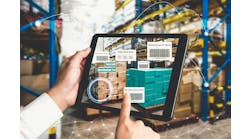Minimizing Supply Chain Disruptions Requires Taking a Wider View of Technology
The headlines about supply chain disruptions only tell part of the story. For the last two years, the supply chain has remained in the news, with stories about port backups, factory closures, material shortages, and labor and driver shortages—pains largely spurred by the pandemic.
These news stories overlook the sheer scope of the challenges facing brands and retailers right now and just how deep-rooted these problems are. Even before the pandemic, supply chain bottlenecks and disruptions had been steadily rising due to factory wage inflation, material lead time issues, and geopolitical issues such as the U.S.-China trade war, which created new tariffs and trade barriers. The pandemic exploited weaknesses that had been compounding for more than a decade.
Unfortunately for brands and retailers, there’s no end in sight to these bottlenecks. China remains committed to its zero-COVID policy, which shuts down factories, neighborhoods and even entire cities in response to a modest rise in cases. This spring, Shanghai went into lockdown, shuttering the largest port in the world and creating backlogs that will continue to ripple through the supply chain well into the future. These shutdowns have hit the electronics industry especially hard, with smartphone and electric vehicle manufacturers among those left scrambling amid the resulting part shortages.
And COVID-19 is far from the only lingering threat. Climate change will continue to put even further pressure on the supply chain. This summer factories shut down across southern China due to a severe heatwave and drought around the Yangtze river basin that depleted water levels, hindering electricity generation at hydropower plants and halting manufacturing for companies like Toyota and Apple.
Businesses have responded to shortages by stockpiling, which has only added strain to the supply chain. What brands and retailers really need is technology in place to facilitate better planning far earlier in the process.
Companies understand the benefits of technology in the abstract. In one recent survey of supply chain leaders, 61% cited technology as a source of competitive advantage. U.S. companies alone will invest around $4.4 trillion in digital transformation to help their businesses wither supply chain hurdles, spending that’s been directly spurred by COVID-19. Before the pandemic, just one-third of major businesses had significantly invested in digital transformation. That number has soared to 93% since the pandemic.
That’s an improvement, but many of these companies are not taking a wide enough view of the systems they need to safeguard against supply chain disruptions. Businesses that only consider software solutions tied to shipping and delivery are addressing just a narrow window of the product lifecycle timeline. Ensuring products hit shelves on time requires taking a truly end-to-end view of a company’s processes.
A Control Tower for Everything
There’s a popular concept in logistics known as the control tower—a connected dashboard for tracking orders from seven days before shipping until they arrive, a span of roughly four to five weeks.
As crucial as that span is, however, those four to five weeks are just a small portion of the nine to 12 months it takes to bring products to market, and just as much can go wrong in those earlier stages of product development and production. Most delays happen long before products arrive at a port.
With so many projects to manage and so many handoffs involved in product development—handoffs to and from product managers, merchandisers, purchasing, factories, quality partners, and more—businesses that trust critical paths to spreadsheets and e-mails are prone to delays and costly mistakes.
That’s been especially true since COVID-19 largely ended the routine travel that kept these operations running smoothly. Merchandisers and suppliers used to regularly fly back and forth between the United States and Asia to talk through product requirements, samples, processes and materials, discussions that helped keep everybody aligned. The elimination of those trips has created enormous communication gaps.
One solution is a control tower that connects not only logistics but all critical steps in product development, from design to sourcing, production to quality. By taking a unified view of their supply chain planning and ensuring that every department has access to the same accurate, real-time information, businesses can better prepare for and predict disruptions and minimize their impact.
An end-to-end control tower creates efficiencies that build permanent cost savings into retail operations. And just as critically, it enables visibility and transparency into the supply chain at a time when consumers are demanding it and governments are requiring it. Most brands and retailers can’t say where the downstream raw materials for their merchandise were produced; they merely know where the completed products were assembled. Just 2% of companies can trace their suppliers beyond the second tier, even though those lower tiers are where the greatest environmental and human rights abuses are likely to occur.
For businesses that are weighing decoupling from China, an end-to-end control tower is especially crucial. Recent COVID closures and port lockdowns have underscored the risks of depending so heavily on China, in addition to heightened concerns about the country’s labor practices. This summer the Uyghur Forced Labor Prevention Act went into effect in the United States, banning the importation of all goods from China’s Xinjiang Uyghur Autonomous Region.
The act requires thorough documentation for all Chinese products entering the country to rebut the presumption they were made with forced labor. Under the new law, it’s not enough for companies to show to customs that their products came from outside the Xinjiang region. They need to prove that no material goods from that region were used, regardless of which province or country they’re importing from.
The financial and reputational risks of sourcing products created with forced labor are enormous, yet too many brands and retailers still don’t have safeguards in place to ensure meeting their standards of corporate responsibility. The complexities and risks of supply chain have evolved to the point where businesses can no longer manage them without smart tech systems in place. They need a central digital conductor to ensure they’re sourcing smarter, monitoring better, and keeping departments on-track, no matter how many orders they process.
Businesses already understand the value of tech systems, as they’ve demonstrated by their recent investments in logistics solutions. Now it’s time they start asking their digital systems to do more for them and address the problems that stem from well before their products arrive at the ports.
Tim Chiu is senior vice president of CBX Software, a provider of global sourcing solutions. He has more than 25 years of experience in supporting retail product lifecycle and global supply chain automation and information technology that enables collaboration between global commerce communities.



